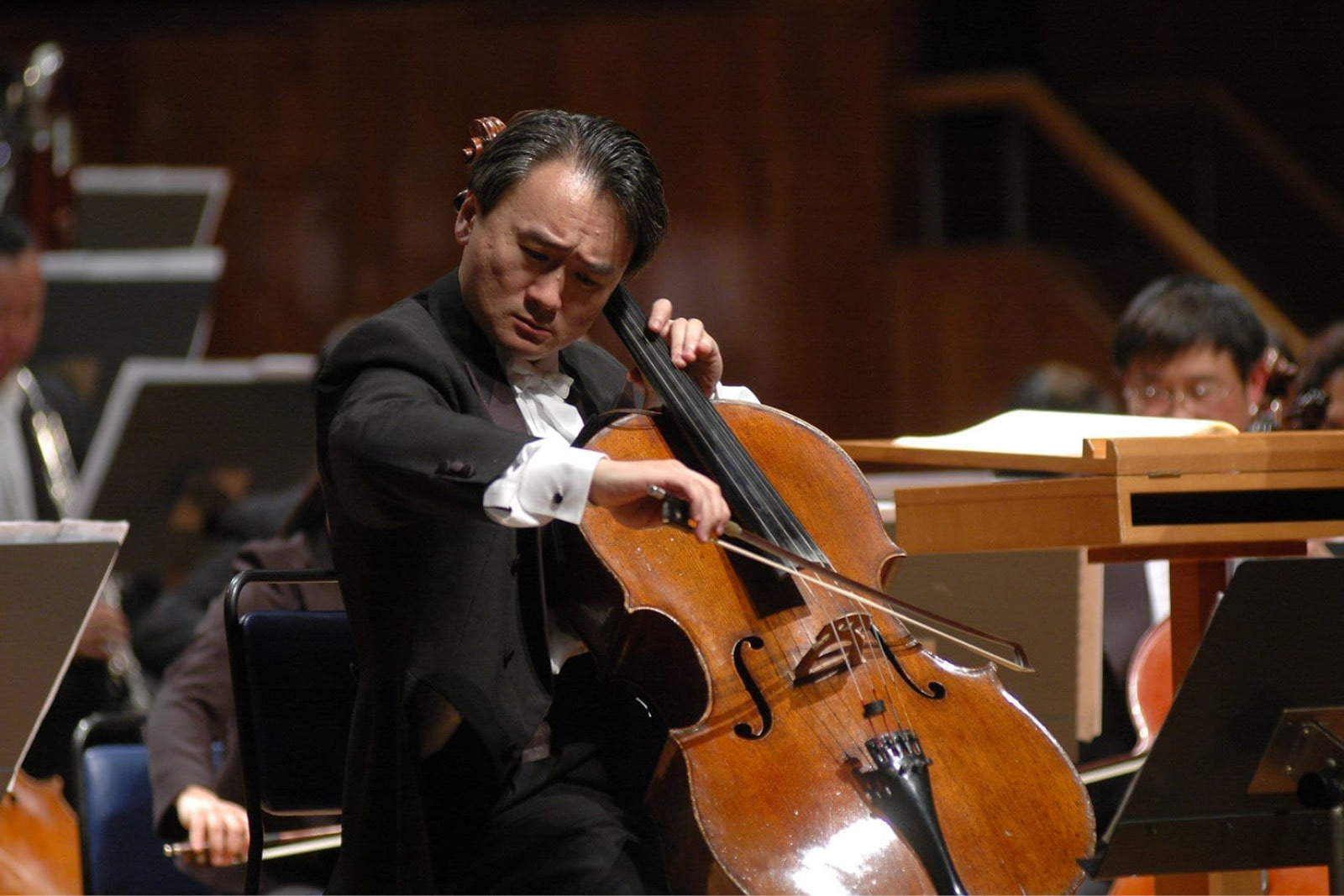Arranged in the older European form under the Copenhagen-born violinist and conductor Nikolaj Szeps-Snaider – with first and second violins facing each other across the stage (perilous, if the hall acoustics are such that performers cannot hear each other) – the Melbourne Symphony Orchestra opened on Thursday evening with charming if uncharacteristically subdued excerpts from Mendelssohn’s A Midsummer Night’s Dream.
The Shakespearean connection to Berlioz’s literary Symphonie Fantastique provided some rationale for the programming, and we heard the Intermezzo, Nocturne, and Wedding March. Mendelssohn’s Overture or Scherzo, the other most common excerpts of incidental music from A Midsummer Night’s Dream, might have provided some interest in contrast to the Wedding March, which is much-loved but also much played.
 Jian Wang. Photo © Xu Bin
Jian Wang. Photo © Xu Bin
Jian Wang’s appearance on stage for Saint-Saëns’ Cello Concerto No 1 in A minor was greeted with enthusiasm, and not without good cause. The Chinese-born cellist came to the world’s attention in the documentary film, From Mao to Mozart: Isaac Stern in China, which was released in 1979 to much critical acclaim, just as the nation was emerging from the Cultural Revolution. Stern was invited to China for a series of masterclasses and concerts, and among the performances he filmed there was that of a 10-year-old Jian Wang at the Shanghai Conservatory. From there, Wang was sponsored to attend the Yale School of Music and later Juilliard, and has since performed with the leading orchestras at home and abroad.
He brings much of himself to the repertoire; when he embarked on a recording of the complete Bach cello suites for Deutsche Grammophon in 2005, he approached them as tone-poems, and likened each piece to the miniature universes of classical Chinese poetry. As with his Bach, Wang’s Saint-Saëns – which he first performed as an 11-year-old with the Shanghai Symphony Orchestra – is luminous and translucent. Wang’s interpretation was lyrical, ebbing and flowing with the concerto’s rises and falls. He has impeccable technique and a rich tone but does not tend to allow himself to become overbearing – even when the orchestra surged above him perhaps a little too much – which I suspect some less attentive audiences used to more forthright cellists and cello technique might wrongfully mistake for timidity. Wang’s technical polish is closer to Yo-Yo Ma than to Pablo Casals. The Saint-Saëns itself was well-suited: both unpretentious and beguiling, allowing the soloist to speak without descending into technical tricks. As Saint-Saëns’ biographer James Harding describes the piece, it “gives the instrument an excellent opportunity to display its resources with straining after needless virtuosity.”
The audience at Hamer Hall was so taken by Wang’s concerto that he was convinced to return for an encore, for which he chose the Sarabande from Bach’s First Cello Suite. Here was Wang’s contemplative lyricism in concentrated form – a delicate and introverted interpretation of the piece that, while articulate, emphasised the resonances and harmony of Bach’s composition over more dramatic, usually heavy-handed, possibilities. You could have heard a pin drop, and it was a wonderful chance to hear the cellist on his own terms. I hope to see Jian Wang return to Australia soon.
Leonard Bernstein once described Berlioz’s 1830 Symphonie Fantastique as one of the first experiments in musical psychedelia because of its dream-like, hallucinatory nature. “Berlioz tells it like it is,” said Bernstein. “You take a trip, you wind up screaming at your own funeral.” When the Melbourne Symphony Orchestra first played the work in 1945, a newspaper noted how “The Symphonie Fantastique of Berlioz set out a series of ultra-romantic scenes for the allurement of the audience. Berlioz provides a panorama based on dark passions, weird images, wild dreams and abnormalities beloved of French romantics … The realistic fantasy met with great favour.”
As with the Mendelssohn in the first, the opening of the second act of the evening seemed restrained but any concerns in this regard were soon shown to be ill-founded. By the fifth movement, in which the hero of the piece finds himself at a witches sabbath “in the midst of a hideous gathering of shades, sorcerers and monsters of every kind who have come together for his funeral”, the orchestra was in full-flight with a sure-footed Szeps-Snaider directing his forces with verve and vigour.
The finale was wonderfully dramatic. As Berlioz himself described it, “The ceremony begins; the bells toll, the whole hellish cohort prostrates itself; a chorus chants the plainsong sequence of the dead [the Dies irae], two other choruses repeat it in a burlesque parody. Finally, the sabbath round-dance whirls. At its violent climax it mingles with the Dies irae, and the vision ends.” Berlioz’s musical imagination was unflinching, and the Melbourne Symphony Orchestra under Nikolaj Szeps-Snaider was more than up to the task of realising the composer’s intoxicating, diabolic vision.











Comments
Log in to join the conversation.